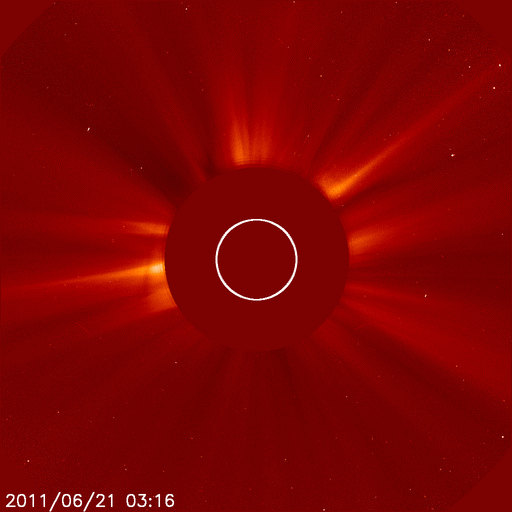NASA anunta o furtuna geomagnetica pentru joi
[media]
O explozie solara de proportii, clasa M-2, generata de o furtuna solara de intensitate medie, a fost inregistrata marti, de observatorul SDO, de la NASA.
Explozia solara, ce a durat 3 ore, va determina o furtuna geomagnetica ce va duce la aparitia mai multor aurore decat in mod normal, conform cercetatorilor de la Goddard Space Flight Center.
Instabilitatile Kelvin-Helmholtz au fost sesizate de catre Observatorul Solar Dynamics - SDO pe 7 iunie, in ultraviolete, fiind vorba de o eruptie de plasma rece, la temperaturi de 80.000 de grade Kelvin, informeaza site-ul oficial al NASA.
Fenomenul a fost vizualizat si de Observatorul Solar terestru - STEREO, dar si catre de observatorul SOHO, scrie Physorg.
Ejectia coronala - fluxul de plasma solara magnetizata - se deplaseaza cu o viteza de 1.400 km/secunda si va lovi Pamantul pe 9 iunie 2011.
Cercetatorii si specialistii in domeniu spera ca pe baza datelor nou colectate vor afla daca, intr-adevar, corona solara este de mii de ori mai fierbinte decat se prevazuse initial.
"Corona este de 1.000 de ori mai fierbinte decat suprafata soarelui vizibil, iar mecanismul de incalzire reprezinta o provocare pentru oamenii de stiinta, tinand cont ca acum detinem dovezi certe ale undelor Kelvin-Helmholtz", a declarat Leon Ofman, cercetator la NASA Goddard Space Flight Center, profesor asociat la Greenbelt, Maryland si Universitatea Catolica din Washington.
In prezent, soarele trece prin perioada de activitate maxima a ciclului sau de aproximativ 11 ani.
Sursa
ziare.com









